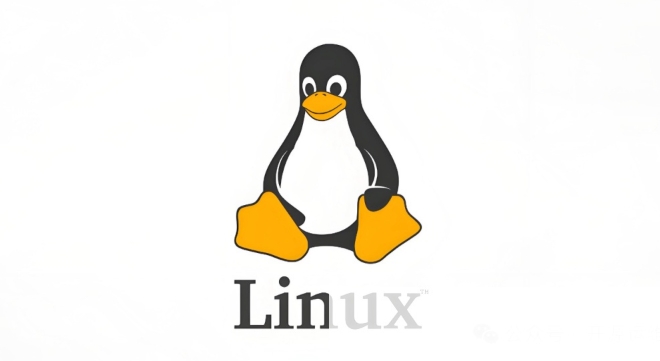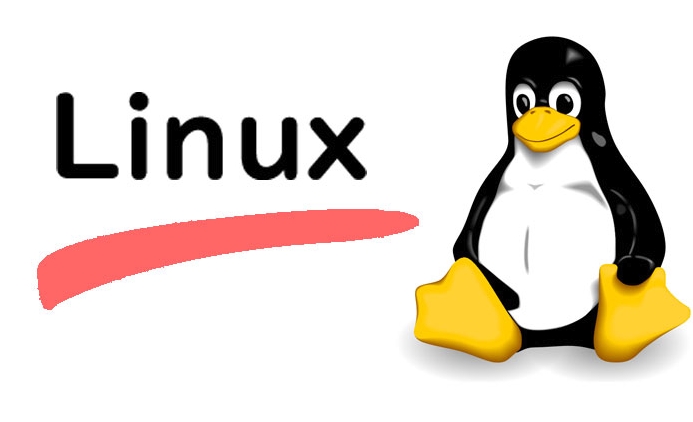The way to move files in Linux is to use the mv command. The basic format for moving files using the mv command is: mv source file path target path, such as mv file.txt /home/user/Documents/; if the target file already exists and needs to be confirmed whether it is overwritten, you can add the parameter -i to display the movement process plus -v, and only if the source file is updated or the target does not exist; if multiple files are moved, you only need to list all files after the command, and the last one is the target path; the movement directory needs to be recursively processed; precautions include using sudo when there is insufficient permissions, ensuring that the target path exists, and moving across partitions may affect the speed, and unsure operations can use -n parameter tests.

Moving files in Linux is not difficult, but for beginners, it is key to figure out how to use commands and common options. The most common method is to use the mv command, which can not only move files, but also rename them.

Basic usage: Use mv command to move files
The core command to move files is:
mv source file path target path
For example, if you want to move file.txt in the current directory to the /home/user/Documents/ directory, you can write it like this:

mv file.txt /home/user/Documents/
After execution, file.txt is no longer in its original location and appears in the target directory.
A few points to note:

- If there is a file with the same name in the target path,
mvwill be overwritten by default and will not be prompted (unless you add the-iparameter) - If you move files between different users, you may need to add
sudoto get permissions
Add options to make operations safer
Although it is fast to use mv directly, it is sometimes easy to operate incorrectly. At this time, you can add several common parameters to improve security or obtain more information:
-i: Interactive mode, before overwriting existing files, you will be asked whether to continue the example:mv -i file.txt /home/user/Documents/
-v: Show details to let you know what exactly happened:mv -v file.txt /home/user/Documents/
-u: Only when the source file is newer than the target file, or the target does not exist, this is suitable for batch processing of files to avoid repeated operations.
You can use these parameters in combination, for example:
mv -iv file.txt /home/user/Documents/
Move multiple files or entire directories
If you want to move multiple files at once, just list all the files you want to move after the command, and the last one is the target path:
mv file1.txt file2.txt /home/user/Documents/
If you want to move a directory, including all the contents in it, you can use the -r parameter (recursive):
mv -r my_folder/ /home/user/Documents/
This command will move the entire directory of my_folder and all internal files to the target path.
Notes and FAQs
There are some situations where you may encounter problems, such as:
- Insufficient permissions : try to use
sudoto increase permissions - The target path does not exist :
mvwill not automatically create the path, you need to manually create the target directory - Move large files across partitions : The underlying layer is actually copying and then deleting, so the speed may be affected
If you are not sure about the operation results, it is recommended to use the -n parameter to test it first (it won't really move, just check the feasibility):
mv -n file.txt /home/user/Documents/
Basically all this is it. Although the mv command is simple, flexibly mastering a few parameters will make you more efficient and more secure in operating files under Linux.
The above is the detailed content of how to move a file in linux. For more information, please follow other related articles on the PHP Chinese website!

Hot AI Tools

Undress AI Tool
Undress images for free

Undresser.AI Undress
AI-powered app for creating realistic nude photos

AI Clothes Remover
Online AI tool for removing clothes from photos.

Clothoff.io
AI clothes remover

Video Face Swap
Swap faces in any video effortlessly with our completely free AI face swap tool!

Hot Article

Hot Tools

Notepad++7.3.1
Easy-to-use and free code editor

SublimeText3 Chinese version
Chinese version, very easy to use

Zend Studio 13.0.1
Powerful PHP integrated development environment

Dreamweaver CS6
Visual web development tools

SublimeText3 Mac version
God-level code editing software (SublimeText3)

Hot Topics
 Comparison between Informix and MySQL on Linux
May 29, 2025 pm 11:21 PM
Comparison between Informix and MySQL on Linux
May 29, 2025 pm 11:21 PM
Informix and MySQL are both popular relational database management systems. They perform well in Linux environments and are widely used. The following is a comparison and analysis of the two on the Linux platform: Installing and configuring Informix: Deploying Informix on Linux requires downloading the corresponding installation files, and then completing the installation and configuration process according to the official documentation. MySQL: The installation process of MySQL is relatively simple, and can be easily installed through system package management tools (such as apt or yum), and there are a large number of tutorials and community support on the network for reference. Performance Informix: Informix has excellent performance and
 How to adjust mysql into Chinese interface? Easy to set the Chinese language environment of mysql
Jun 04, 2025 pm 06:36 PM
How to adjust mysql into Chinese interface? Easy to set the Chinese language environment of mysql
Jun 04, 2025 pm 06:36 PM
To tune MySQL into a Chinese interface, it can be implemented through MySQLWorkbench or command line tools. 1) In MySQLWorkbench, open "Preferences", select the "Appearance" tab, and then select "Chinese(Simplified)" in the "Language" drop-down menu, and restart. 2) When using command line tools, set the operating system locale variables, such as using "exportLANG=zh_CN.UTF-8" on Linux or macOS, and then run the mysql client.
 How does resource usage (CPU, memory) differ between Linux and Windows?
Jun 05, 2025 am 12:13 AM
How does resource usage (CPU, memory) differ between Linux and Windows?
Jun 05, 2025 am 12:13 AM
Linux and Windows have their own advantages and disadvantages in CPU and memory usage: 1) Linux uses time slice-based scheduling algorithms to ensure fairness and efficiency; Windows uses priority scheduling, which may cause low-priority processes to wait. 2) Linux manages memory through paging and switching mechanisms to reduce fragmentation; Windows tends to pre-allocate and dynamic adjustment, and efficiency may fluctuate.
 How does the cost of ownership differ between Linux and Windows?
Jun 09, 2025 am 12:17 AM
How does the cost of ownership differ between Linux and Windows?
Jun 09, 2025 am 12:17 AM
Linux's cost of ownership is usually lower than Windows. 1) Linux does not require license fees, saving a lot of costs, while Windows requires purchasing a license. 2) Linux has low hardware requirements and can extend the service life of the device. 3) The Linux community provides free support to reduce maintenance costs. 4) Linux is highly secure and reduces productivity losses. 5) The Linux learning curve is steep, but Windows is easier to use. The choice should be based on specific needs and budget.
 How does the performance of I/O operations differ between Linux and Windows?
Jun 07, 2025 am 12:06 AM
How does the performance of I/O operations differ between Linux and Windows?
Jun 07, 2025 am 12:06 AM
LinuxoftenoutperformsWindowsinI/Operformanceduetoitscustomizablekernelandfilesystems,whileWindowsoffersmoreuniformperformanceacrosshardware.1)LinuxexcelswithcustomizableI/OschedulerslikeCFQandDeadline,enhancingperformanceinhigh-throughputapplications
 How to install Linux alongside Windows (dual boot)?
Jun 18, 2025 am 12:19 AM
How to install Linux alongside Windows (dual boot)?
Jun 18, 2025 am 12:19 AM
The key to installing dual systems in Linux and Windows is partitioning and boot settings. 1. Preparation includes backing up data and compressing existing partitions to make space; 2. Use Ventoy or Rufus to make Linux boot USB disk, recommend Ubuntu; 3. Select "Coexist with other systems" or manually partition during installation (/at least 20GB, /home remaining space, swap optional); 4. Check the installation of third-party drivers to avoid hardware problems; 5. If you do not enter the Grub boot menu after installation, you can use boot-repair to repair the boot or adjust the BIOS startup sequence. As long as the steps are clear and the operation is done properly, the whole process is not complicated.
 How to enable the EPEL (Extra Packages for Enterprise Linux) repository?
Jun 17, 2025 am 09:15 AM
How to enable the EPEL (Extra Packages for Enterprise Linux) repository?
Jun 17, 2025 am 09:15 AM
The key to enabling EPEL repository is to select the correct installation method according to the system version. First, confirm the system type and version, and use the command cat/etc/os-release to obtain information; second, enable EPEL through dnfinstallepel-release on CentOS/RockyLinux, and the 8 and 9 version commands are the same; third, you need to manually download the corresponding version of the .repo file and install it on RHEL; fourth, you can re-import the GPG key when encountering problems. Note that the old version may not be supported, and you can also consider enabling epel-next to obtain the test package. After completing the above steps, use dnfrepolist to verify that the EPEL repository is successfully added.
 How does Linux perform compared to Windows for web server workloads?
Jun 08, 2025 am 12:18 AM
How does Linux perform compared to Windows for web server workloads?
Jun 08, 2025 am 12:18 AM
Linux usually performs better in web server performance, mainly due to its advantages in kernel optimization, resource management and open source ecosystem. 1) After years of optimization of the Linux kernel, mechanisms such as epoll and kqueue make it more efficient in handling high concurrent requests. 2) Linux provides fine-grained resource management tools such as cgroups. 3) The open source community continuously optimizes Linux performance, and many high-performance web servers such as Nginx are developed on Linux. By contrast, Windows performs well when handling ASP.NET applications and provides better development tools and commercial support.






